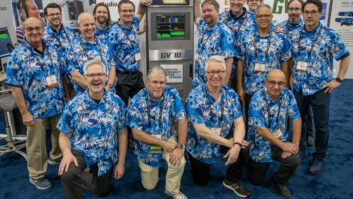
Fig. 1: What is it? Last issue I told you about a fun panel discussion at the Wisconsin Broadcaster’s Clinic called “What Is It?”
Cumulus Rockford CE John Huntley offers Workbench readers a chance to weigh in. Take a look at Fig. 1. What is it? Can you sleuth this out? Read on for the answer!
* * *
Brian Urban is the chief operator for KUT(FM) Radio at the University of Texas at Austin. Brian writes that sites with multiple tenants often are secured by chains with padlocks looped together, so each tenant has its own lock. It’s a great system — until someone puts locks around your lock and you have no access. (Enter the bolt cutters!)
I’ve seen engineers use a common combination lock; but then you have no control over who gets the combination.
Brian uses a device we featured about 10 years ago that lets everyone use his or her own lock, with no chance of locking anyone out. It’s called the Stymielock and is made by a company in North Carolina. You can find more information at the Radio World links page, radioworld.com/links.
* * *
And the tips for the tower site just keep on comin’.
This next idea is from projects engineer and consultant Len Watson. When replacing a Lapp-type AM base insulator, toss a couple of Styrofoam packing peanuts in the bottom.
Don’t pack it tightly; use just a couple. Here’s why: If the weep hole does clog and you don’t catch it, at least freezing water will compress the peanuts, instead of shattering the insulator. (Len also warns not to use the salted variety of peanuts!)
Consultants’ websites contain lots of good information; Len’s site is no exception. Visit www.scopefocus.com.

Fig.2: These O-rings work great for securing the VAC pop filter; find them at www.grainger.com. * * *
Several engineers and I recently discussed how to secure items like loose power supplies or utility boxes to remote gear.
Most everyone uses hook-and-loop fastening such as Velcro, mostly because the strips are easy to cut and place, and they usually hold well. However, after a remote season your fastener may be losing its grip. Heat in particular may cause adhesive to deteriorate. The next thing you know, whatever was supposed to be fastened isn’t.
Robin Cross of KCUR(FM) asked if I’d tried Power-Grip, used in the music industry to hold foot pedals for musicians. Power-Grip comes in strips measuring one inch wide by one meter long. It, too, uses a self-attachment scheme, mating to itself so you don’t need a male and a female strip. But the secret is in the adhesive.
Application is simple, but first you need to use a rag and a solvent like lighter fluid — outdoors, in a well-ventilated space — to remove any prior adhesive. Once you’ve got clean metal, apply the Power-Grip strips. It takes 24 hours for the adhesive to cure; after that, those utility boxes will stay put.
Head to radioworld.com/links for a great informational video and ordering information.

Fig. 3: Slip the O-rings over the frame to keep the pop filter secure.

Fig. 4: A secure pop filter. * * *
Robin also offers a suggestion for engineers using VAC-RE20 microphone pop filters (www.popfilter.com). These can become loose over time. To cure that, Robin orders the O-rings pictured in Fig. 2, from Grainger. Slip the rings over the frame, as seen in Fig. 3, for a finished product and a pop filter that won’t slip.
He adds that it is common for his microphone arm/boom hardware to loosen. His solution is to find the least permanent thread-lock compound and use it on the ends of the bolts after securing the nuts.
* * *
Thoughts on Fig. 1?
Well, John says it was a very windy day. Some kind of cross-field polarized antenna? Better get a grip on that mount! What appears from the ground to be some odd kind of antenna mount is in fact an antenna bay; its mount has slipped, allowing it to sag toward the ground.
Contribute to Workbench! You’ll help your fellow engineers and qualify for SBE recertification credit. Send Workbench tips to [email protected]. Fax to (603) 472-4944.
Author John Bisset has spent 43 years in the broadcasting industry and is still learning. He is SBE certified and is a recipient of the SBE’s Educator of the Year Award. He works for Elenos USA.












